For Part 1 of this paper see – bit.ly/2LXSsOF
GOLF
Lottie Dod first began exploring the game of golf at the age of fifteen, around the time very few golf clubs would accept women members. But by the time she became seriously interested, the Ladies Golf Union had been founded in 1893, and women’s golf was gradually becoming established. Based in St. Andrews, Fife, the LGU was the governing body for women’s and girls’ amateur golf in Great Britain and Ireland, until it merged with the Royal and Ancient Golf Club in 2017.
Although Lottie found golf a difficult sport to master, in 1894 she helped establish a ladies’ golf club at Moreton, on the Wirral. That same year she entered the Ladies National Match-play Championships at Littlestone, Kent, but was knocked out in the third round. Undaunted, Lottie’s interest in the sport grew, and she became a habitual competitor in the National Championships, reaching the semi-finals in 1898 and 1900, when she was narrowly defeated on both occasions. In 1900, she also played in an unofficial international match for England against Ireland, which the English won 37–18.
Lottie did not compete in any golf tournaments in 1901 after the death of her mother, and rarely entered any major events for the next two years. However, in 1904 she did play in the British Ladies Amateur Championship at Troon in Ayrshire. She qualified for the semi-finals for the third time, and won the Championship for the first time. Her opponent in the final was the former champion Mary ‘May’ Hezlet (1882-1978) a sports writer, recognised as ‘probably Ireland’s greatest woman golfer’. After 17 holes the pair were all-square, but Hezlet missed her putt on the final hole, and Lottie pinched an unexpected victory, to become the first, and only, woman to win British tennis and golf championships.
Following Lottie’s victory, Frances C. Griscom [1879 -1973], who won the US Women’s Amateur Championship at Shinnecock Hills Golf Club, Long Island, New York in 1900, invited her to attend the US Women’s Amateur Championship as a spectator. Lottie set sail for Philadelphia, and upon her arrival discovered the tournament rules had been changed, allowing non-Americans to compete. She registered to play, but lost in the opening round. Unfazed Lottie was able to persuade several American golfers to cross the Atlantic the following year and compete in the British championships.
- Mary ‘May’ Hezlet
In the week before the 1905 championships, three international matches had been organised, the first was a match between Britain and the United States of America. Britain won the match 6–1, but the ill-fated Lottie was the only British player to lose her game. Lottie then represented the England team against Scotland, which England lost 3–4, followed by a match against Ireland, and on this occasion England won by 4–3, although again Lottie came up short and lost both her games. Lottie made her last appearance in golf that year, when she was eliminated in the fourth round of the National Championships.
ARCHERY
In the autumn of 1905, Lottie and her brothers sold Edgeworth and moved to a new home near Newbury, Berkshire. Since it is claimed one of the Dod family had commanded the English long-bowmen at the Battle of Agincourt, and the family had dabbled in the sport at some time or another, archery seemed an appropriate sport for it to adopt, and they joined the Welford Park Archers in Newbury. By 1906, Lottie had won her first tournament, and finished fifth in the Grand National Archery Meeting of 1906, 1907 and 1908, earning herself a place in the British Olympic team in London.
Twenty-five British women made up the field in the women’s archery event, which did not include the best archer of the era, Alice Legh [1855-1948]. Legh was recognised as ‘the greatest British woman archer of all-time’. From 1881 to 1922, she had won the National Ladies’ Archery Championship twenty-three times, but declined to compete at the London Olympics in 1908 in order to prepare for her defence of the national championship the following week. She comfortably defended her title against Queenie Newall [1854-1929]. Legh held the title for a record eight consecutive years between 1902 and 1909, and retired from archery in 1922 at the age of sixty-seven. In miserable rainy conditions, Lottie held the lead in the Olympic competition at the White City stadium after the first day, but was surpassed by Queenie Newall on the second day, eventually securing second place and the silver medal with 642 points. Queenie won the gold medal at the age of 53 years with a winning score of 688. Lottie’s brother Willy fared a little better and unexpectedly won the gold medal in the men’s double York round of the competition with 815 points.
- Alice Legh
- Queenie Newall
- Willy Dod
In 1910, Lottie came close to winning the Grand National Archery Meeting which would have made archery the third sport in which she became a national champion, but it was not to be. Both Lottie and her brother William led after day one, but moved down to second on the final competition day. The Welford Archers disbanded in late 1911, and the Dod family interest in archery faded, and brought to an end Lottie Dod’s long and distinguished career in competitive sport.
- ‘Babe’ Zaharias
- Lottie’ Dod
The Guinness Book of Records names Charlotte ‘Lottie’ Dod as the most versatile female athlete of all time, alongside the American track and field athlete, basketball, baseball, and fellow golfer Mildred Ella ‘Babe’ Didrikson Zaharias [1911-1956]. In 1913, their brother Tony having married, Willy and Lottie moved to north Devon, where they took a new house in the historic port town of Bideford, on the river Torridge.
WORLD WAR 1
When World War I broke out, Willy enlisted with the infantry regiment the Royal Fusiliers. Lottie wanted to be transferred to the war zones in France but her recurring sciatica hampered her ambition, and she never served as a nurse outside England.
In 1916 Lottie worked for the British Red Cross at the Chelsea Voluntary Aid Detachment Hospital [VAD] in Grosvenor Crescent, Belgravia. The hospital opened in 1915, in a property loaned by Lady Morrison-Bell, staffed by volunteers, it provided a total of 80 beds and an operating theatre. The hospital closed in 1919 having treated more than 2000 patients. She also worked in a military hospital in the village of Speen, Berkshire. After the war ended Lottie was awarded a Service Medal by the British Red Cross for providing more than 1,000 hours of service during the conflict.
Lottie, never married, and lived the autumn of her life in London and Devon, continuing to attend the Wimbledon Championships until her late eighties. After her brother Willy died in 1954, she lived in several nursing homes on the south coast of England, before eventually settling at the Birchy Hill Nursing Home in Sway, Hampshire, where she passed away peacefully in bed at the age of 88, listening to the Wimbledon commentaries on the radio.
SUMMARY
Of course it will never be possible to accurately evaluate the attributes of modern female athletes, with that of their counterparts of the Victorian era. But can you even begin to imagine the challenges committed women athletes had to tackle during the troubled times which the resolute Charlotte Dod faced when she was carving out her sporting legacy ?
Charlotte was one of the lucky ones, much more fortunate than most, for in her day sport favoured the wealthy. It was a rare luxury for the working girl whose leisure time was hard to come by, as working hours were long and arduous. Playing fields were far from as well prepared as the perfectly presented arenas of today. And equipment was expensive, and clothing cumbersome and uncomfortable.
The railway system in Britain, although the oldest in the world, was still in its formative years, and it was not until the first public railway system opened in 1825 that the transformation of travel began. Prior to that people were transported by carriage or on horse-back, however in the late 19 Century some progress was made as roads were improved, and stagecoaches provided the well-to-do with a relatively comfortable means of transport. In 1913 the first mass-produced automobile was launched. Air travel remained inconceivable until the 1930s, pending the invention of the jet engine, which would revolutionise the concept of air travel. Until then journies overseas were made by steamship,
It was not until 1928 that women’s suffrage finally won the battle which allowed to women to vote on equal terms with men, and more recently the 2010 Equality Act further protected the rights of women. The number of women engaged in some form of sporting activity is far greater today than in the early years of the 20 century. The elite athlete abundantly aided by a surfeit of technical experts, delivering advice on issues such as technique, psychology, physiology, nutrition, and the rest. Undoubtedly, women athletes of today far outnumber and for the most part are almost certainly much more adept than their counterparts of years gone by. Although fewer in number, determination and grit were a pre-requisite of those destined to succeed back then, perhaps even more so than today.
However, of one thing I am persuaded. It is extremely gratifying to ponder the achievements of our former sporting heroines without the need for comparison.
Article © Roy Case

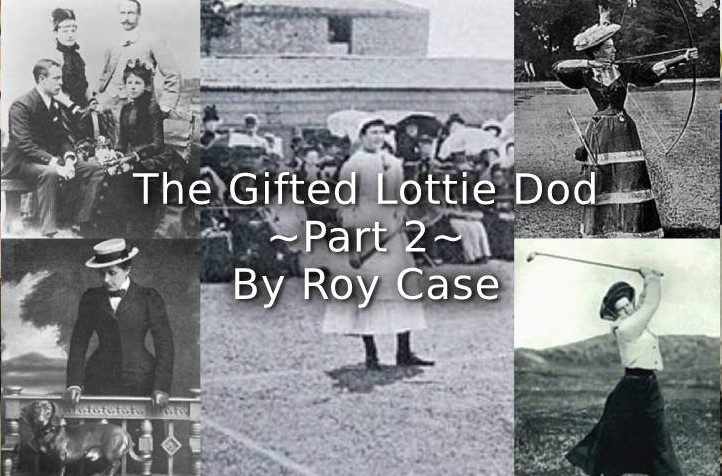
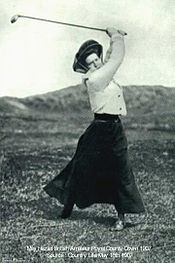
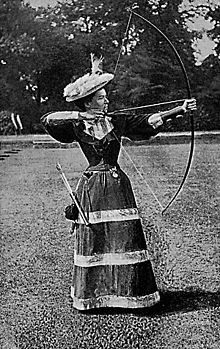
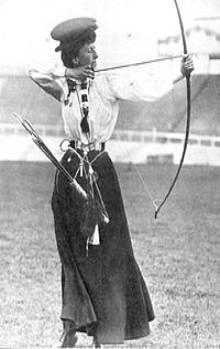
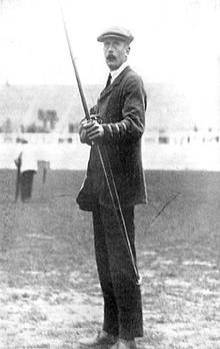
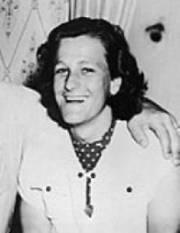
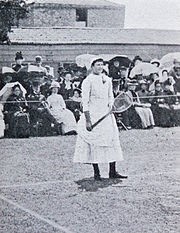


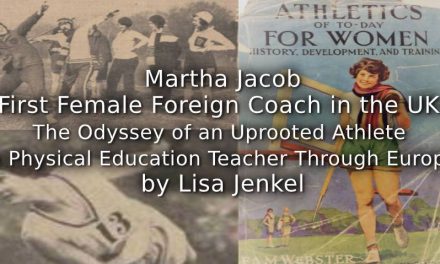

Came across the name of Lottie Dodd while researching The Wirral, as I’m moving up there soon. I had never heard of her, and was fascinated to find out about her sporting achievements. What a gal! Read both parts of this report, found it really interesting.
Someone should make a film of her life, she was involved in so many different sports and visited lots of different countries.